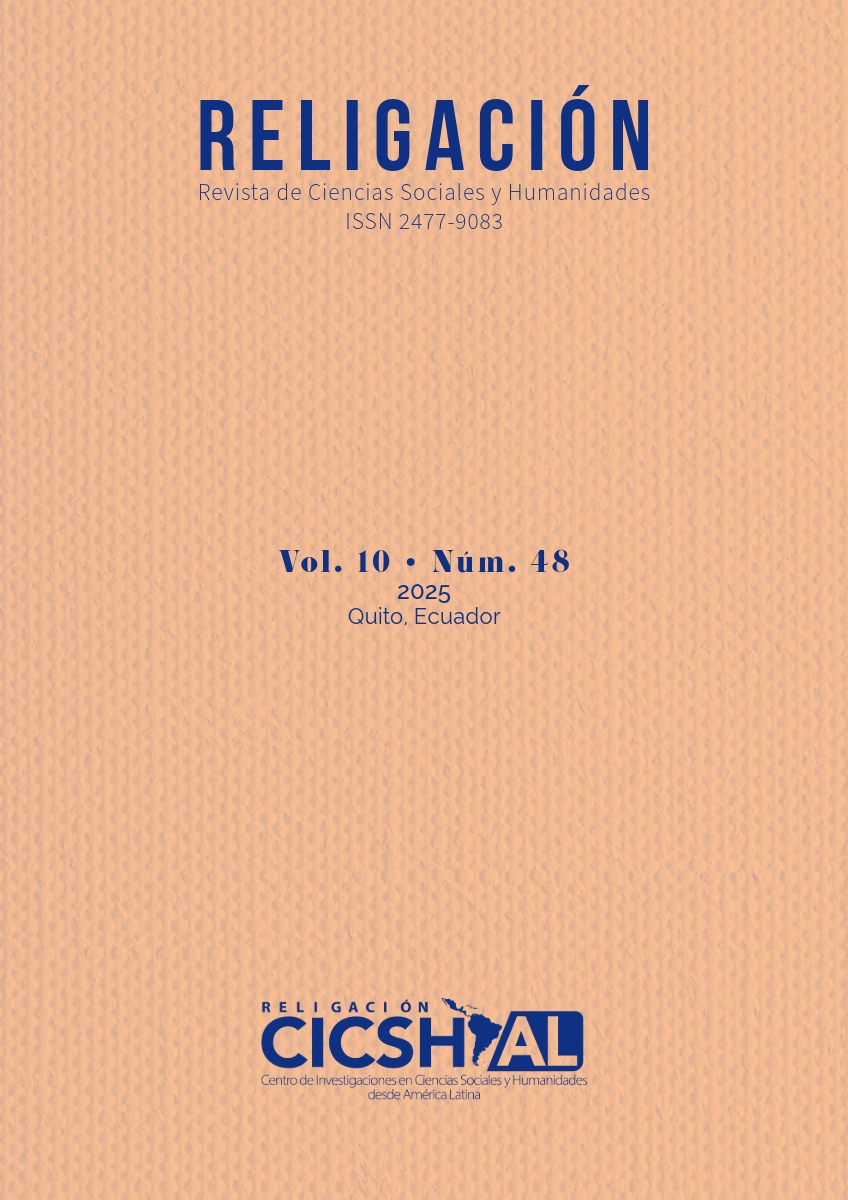Inclusion of femicide suicide as a separate crime in the Comprehensive Organic Criminal Code
Abstract
This study examined feminicidal suicide as an extreme manifestation of gender-based violence and as a direct consequence of the systemic failure to ensure the effective protection of women’s rights. The phenomenon, theorized by scholars such as Marcela Lagarde and Jane Caputi, is grounded in the need to render visible the deaths of women induced through coercion and sustained abuse. Similarly, Verónique Wester-Oiusse underscored the importance of its criminal classification under the principle of legality, which prohibits the sanctioning of conduct in the absence of a prior legal norm.The principal objective of this research was to establish the necessity of recognizing and incorporating feminicidal suicide as an autonomous criminal offense within Ecuador’s Comprehensive Organic Criminal Code (COIP). This proposal is framed within a gender-based approach that seeks to close existing legal gaps and to guarantee the comprehensive protection of victims.Methodologically, the study adopted a qualitative, non-experimental design grounded in doctrinal and comparative legal analysis. It examined the legal frameworks of El Salvador and Chile—jurisdictions that have already incorporated this criminal figure—and complemented this with the analysis of two emblematic Ecuadorian cases: Paola Guzmán Albarracín and Gabriela Díaz Cañizares, in which sexual and psychological violence culminated in suicide.The findings revealed that the absence of a specific criminal provision addressing feminicidal suicide within Ecuador’s COIP perpetuates impunity, revictimization, and legal vulnerability for women subjected to gender-based violence. The study concludes that the typification of feminicidal suicide would significantly strengthen Ecuador’s penal framework, align it with international human rights standards, and facilitate the development of comprehensive public and criminal policies aimed at eradicating violence against women and safeguarding their right to a life free from violence.
Downloads
Metrics
References
Asamblea Legislativa de la República de El Salvador. (2011). Ley Especial Integral para una Vida Libre de Violencia para las Mujeres.
Asamblea Nacional de la República del Ecuador. (1971). Código Penal.
Asamblea Nacional de la República del Ecuador. (2008). Constitución de la República del Ecuador.
Asamblea Nacional de la República del Ecuador. (2014). Código Orgánico Integral Penal.
Bautista, C. O. (2022). European guide on forced suicides. PSYTEL.
Berlanga Gayón, M. (2023). ¿Femicidio o feminicidio? Marcela Lagarde y Montserrat Sagot: dos visiones complementarias. Universidad Nacional Autónoma de México.
Canevari, C. (2019). La cruel expresión de la violencia patriarcal. En C. Canevari, & R. Isac, (eds.). Los laberintos de la violencia patriarcal (pp. 73-98). Barco Edita.
Carreras Presencio, A. I. (2019). Concepto jurídico de violencia de género. DYKINSON, S.L.
Castillo-Ara, A. (2025). El suicidio femicida y su delimitación entre la inducción y el auxilio a suicidio. Revista Ius et Praxis, 31(1), 100-119.
Comisión Económica para América Latina y el Caribe (CEPAL). (2020). La pandemia en la sombra: Femicidios o feminicidios ocurridos en 2020 en América Latina y el Caribe. https://n9.cl/p45z6
Comité de Expertos de la ONU. (2008). Declaración sobre el femicidio.
Corte Interamericana de Derechos Humanos. (2020). Caso Guzmán Albarracín y otras Vs. Ecuador.
De lo Penal, Militar, Penal Policial y Tránsito. (2016). Caso Gabriela Díaz- violación y muerte, 001-2016-SSI.
Gouhaneh, B. J., & Inzunza, G. T. (2022, 28 de diciembre). Sobre la nueva Ley Antonia: Reparación y confusión. Ciper. https://n9.cl/98t25
Martínez Barroso, A. (2019). Comprender el suicidio desde una perspectiva de género: Una revisión crítica bibliográfica. Revista de la Asociación Española de Neuropsiquiatría, 39(135), 51-73. https://doi.org/10.4321/S0211-57352019000100004
Ministerio de Justicia y Derechos Humanos de Chile. (2022, 19 de diciembre). Ley N° 21.523: Modifica diversos cuerpos legales para mejorar las garantías procesales, proteger los derechos de las víctimas de los delitos sexuales, y evitar su revictimización. Biblioteca del Congreso Nacional de Chile. https://www.bcn.cl/leychile/navegar?idNorma=1186883
Motta, M. N. (2022). Comportamiento del suicidio. Grupo Regional de Patología Forense.
Naciones Unidas. (2025). Violencia feminicida en cifras América Latina y el Caribe. CEPAL.
Organización de los Estados Americanos (OEA). (2018). Ley Modelo Interamericana para Prevenir, Sancionar y Erradicar la Muerte Violenta de Mujeres y Niñas (Femicidio/Feminicidio).
Organización de las Naciones Unidas (ONU Mujeres). (2023, 17 de junio). La violencia de género es una de las violaciones más generalizadas de los derechos humanos en el mundo. https://unric.org/es/la-violencia-de-genero-segun-la-onu/
Poder Judicial de Chile. (2025, 24 de enero). Juzgado de garantía de Caldera ordena la prisión preventiva de imputado por suicidio femicida. https://n9.cl/d6avm
Radford, J., & Russell, D. E. H. (1992). Femicide: The politics of woman killing. Twayne Publishers.
Suqui, M. M., & Zamora, V. A. (2024). The lack of classification of the crime of feminicidal suicide by induction or assistance in the Comprehensive Organic Criminal Code. Conciencia Digital, 7(1), 120-135. https://doi.org/10.33262/concienciadigital.v7i1.3185
Vega Guzmán, A. M. (2021). Aproximación al delito de suicidio feminicida por inducción o ayuda regulado en El Salvador. Revista Penal México, (10). https://doi.org/10.53728/rpmx.2021.10.04
Williams, G. (2022, octubre). Suicidio feminicida: Legislación comparada. Biblioteca del Congreso Nacional de Chile.
Copyright (c) 2025 Doménica Salomé Tene Pesántez, Adriana Valeria Pesántez Coronel

This work is licensed under a Creative Commons Attribution-NonCommercial-NoDerivatives 4.0 International License.











